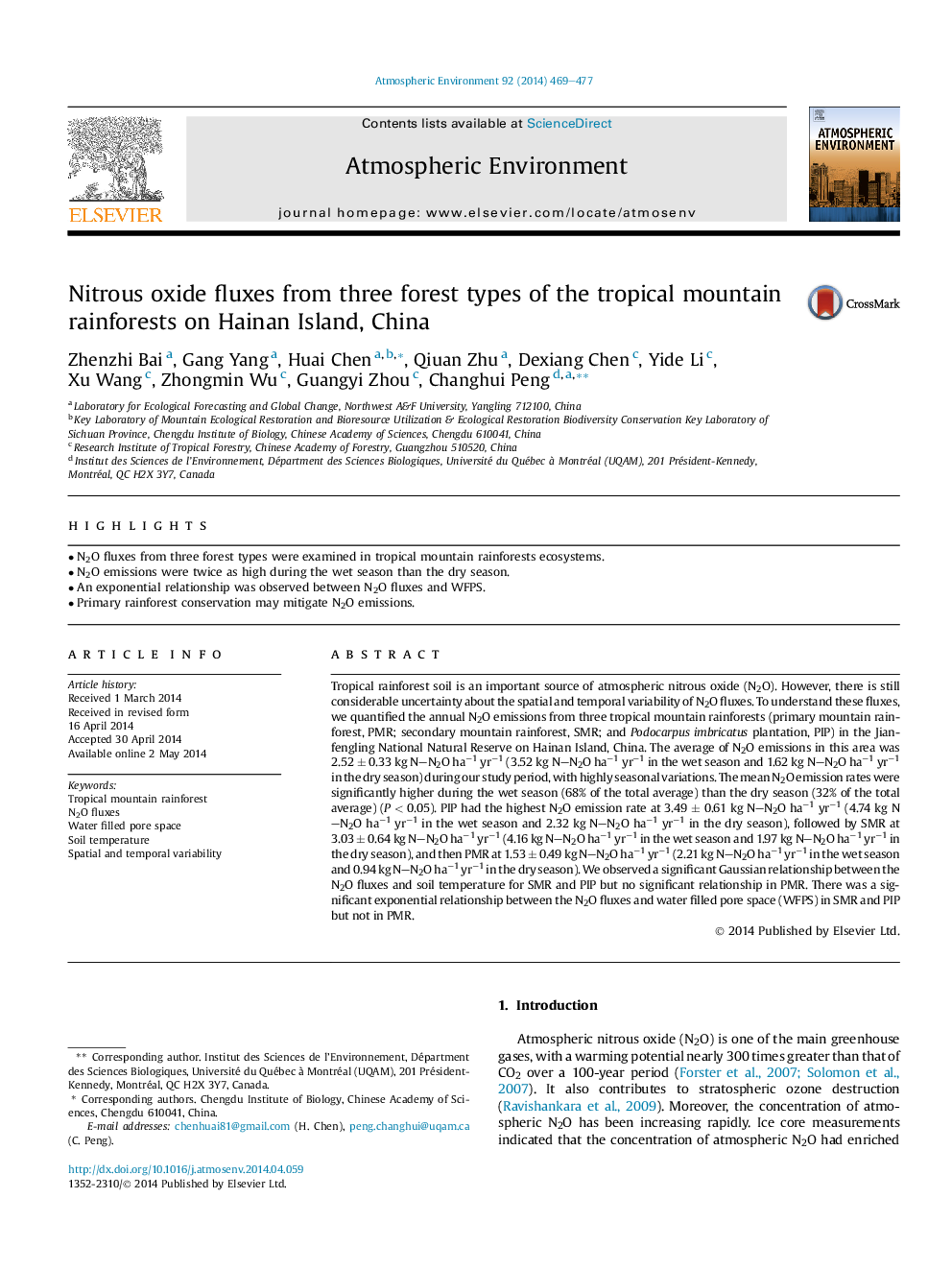| Article ID | Journal | Published Year | Pages | File Type |
|---|---|---|---|---|
| 6339410 | Atmospheric Environment | 2014 | 9 Pages |
Abstract
Tropical rainforest soil is an important source of atmospheric nitrous oxide (N2O). However, there is still considerable uncertainty about the spatial and temporal variability of N2O fluxes. To understand these fluxes, we quantified the annual N2O emissions from three tropical mountain rainforests (primary mountain rainforest, PMR; secondary mountain rainforest, SMR; and Podocarpus imbricatus plantation, PIP) in the Jianfengling National Natural Reserve on Hainan Island, China. The average of N2O emissions in this area was 2.52 ± 0.33 kg N-N2O haâ1 yrâ1 (3.52 kg N-N2O haâ1 yrâ1 in the wet season and 1.62 kg N-N2O haâ1 yrâ1 in the dry season) during our study period, with highly seasonal variations. The mean N2O emission rates were significantly higher during the wet season (68% of the total average) than the dry season (32% of the total average) (P < 0.05). PIP had the highest N2O emission rate at 3.49 ± 0.61 kg N-N2O haâ1 yrâ1 (4.74 kg N-N2O haâ1 yrâ1 in the wet season and 2.32 kg N-N2O haâ1 yrâ1 in the dry season), followed by SMR at 3.03 ± 0.64 kg N-N2O haâ1 yrâ1 (4.16 kg N-N2O haâ1 yrâ1 in the wet season and 1.97 kg N-N2O haâ1 yrâ1 in the dry season), and then PMR at 1.53 ± 0.49 kg N-N2O haâ1 yrâ1 (2.21 kg N-N2O haâ1 yrâ1 in the wet season and 0.94 kg N-N2O haâ1 yrâ1 in the dry season). We observed a significant Gaussian relationship between the N2O fluxes and soil temperature for SMR and PIP but no significant relationship in PMR. There was a significant exponential relationship between the N2O fluxes and water filled pore space (WFPS) in SMR and PIP but not in PMR.
Keywords
Related Topics
Physical Sciences and Engineering
Earth and Planetary Sciences
Atmospheric Science
Authors
Zhenzhi Bai, Gang Yang, Huai Chen, Qiuan Zhu, Dexiang Chen, Yide Li, Xu Wang, Zhongmin Wu, Guangyi Zhou, Changhui Peng,
